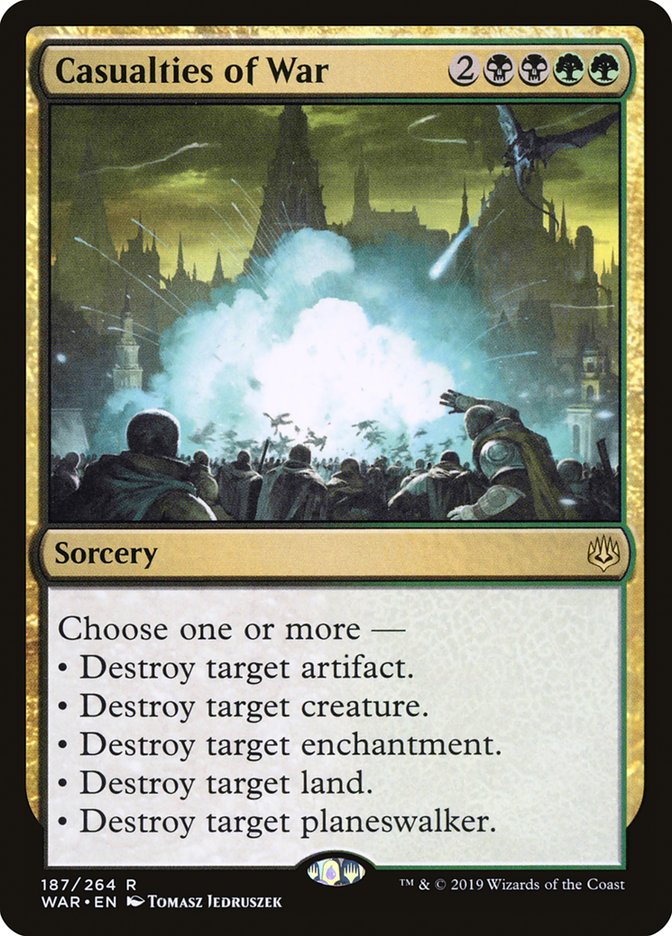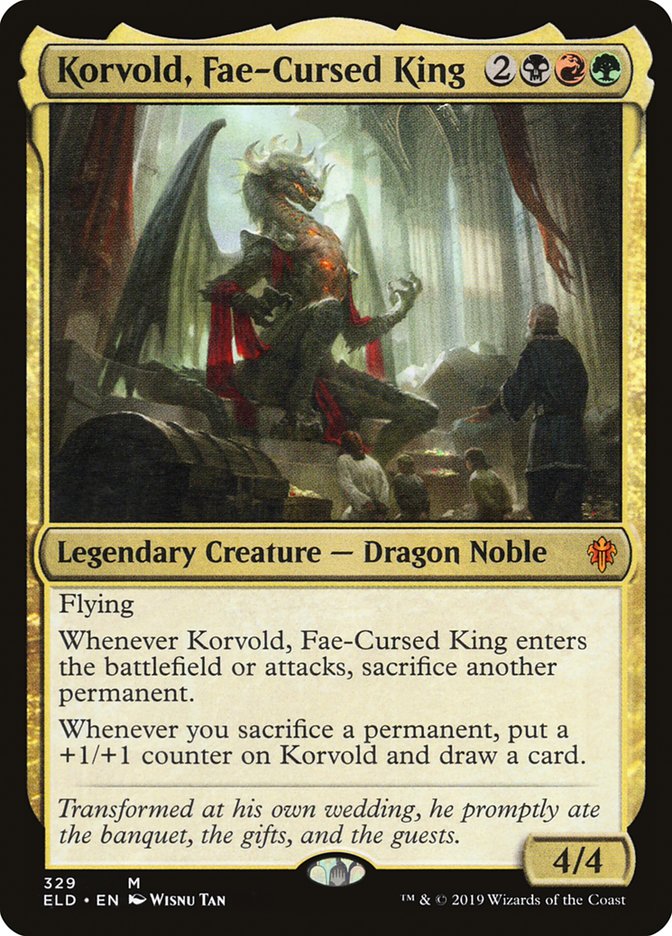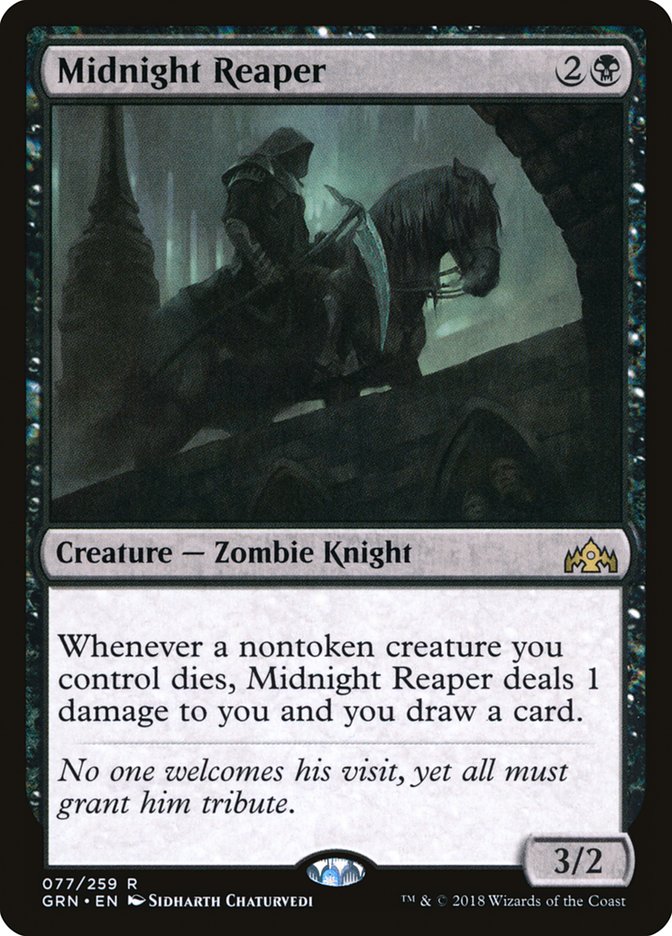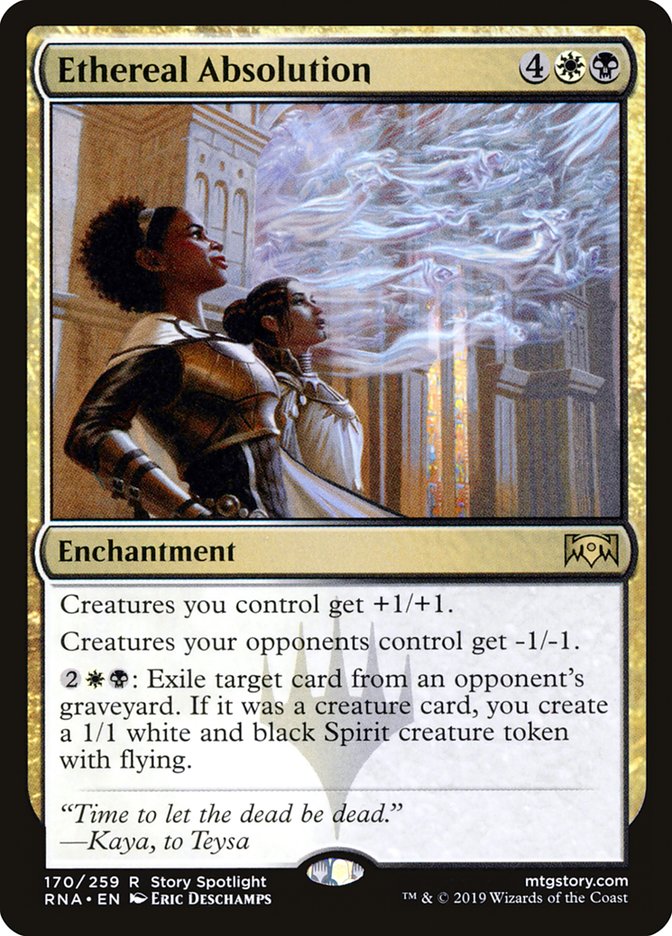I’ll to begin this week with a small aside. Anything I write today needs to be taken in the context of one of the largest Standard bannings in recent memory. Magic formats are incredibly complex systems composed of thousands of individuals all moving simultaneously to gain an advantage on each other. As a result, predicting these systems is challenging, and it’s even more challenging if you only have a small team or a limited number of playtest games. The Play Design team at Wizards of the Coast has to deal with both of those problems relative to the public hivemind. They messed up, but let’s not lose sight of how challenging their job is.
Lots of changes to multiple formats today: https://t.co/d6nUmtCPiJ
As a reminder, Pioneer’s announcement will be posted later this afternoon.
— Aaron Forsythe (@mtgaaron) November 18, 2019
In a similar vein, I’ll attempt to predict Standard’s future in this article despite inadequate resources. As of the time of this writing, I have played no post-ban Throne of Eldraine Standard. Please take everything I say with a grain of salt, and consider the lists contained within to be starting points, not finely tuned machines.
At Mythic Championship VI two weeks ago, a ragtag group of players from all over the United States brought the format to its knees, and they did it without the help of a single Magic Pro League player or even a catchy team name. Sultai Sacrifice AKA Cat Food, the resulting deck, boasted a 68% win rate against the field, despite not taking any pilot to the Top 8. Sultai Food, on the other hand, continued to put up results in the MPL Split and Standard PTQs that followed the Mythic Championship. I was a member of that illustrious unnamed team, but foolishly selected stock Sultai Food rather than the real best deck in the format.
When the banings were announced, Sultai Sacrifice was the first thing on my mind. Let’s start by looking at a pre-ban list:
Creatures (16)
Planeswalkers (6)
Lands (24)
Spells (14)

Although Sultai Sacfice did lose relevant cards in the banning, it doesn’t rely on them as much as you might think. Once Upon a Time is far weaker without Hydroid Krasis to find, and some of my teammates went so far as to play less than four as a result. While I think they went a little far, I do think the card was unimpressive in several matchups and not crucial to this shell.
Oko, Thief of Crowns is an amazing card here and its loss is definitely felt. But it’s also very good against Sultai Sacrifice because of its ability to turn Witch’s Oven into an Elk and disrupt the functioning of the core engine. Thus, overall, it’s not clear whether Monday’s Banned and Restricted announcement really hurt the deck or not.
Veil of Summer was in the sideboard of Sultai Sacrifice, but it also was generally better against the deck than in it. Sultai Sacrifice seeks to sweep opponents with Massacre Girl and answer their planeswalkers with Murderous Rider. Protecting a planeswalker like Nissa, Who Shakes the World with Veil of Summer is one of the primary ways classic Sultai Food can go late against Sultai Sacrifice. Losing Veil of Summer does make the deck much more vulnerable to Casualties of War, but that’s not the end of the world. Casualties is likely to see less play than before, mostly because a smaller percentage of the format will be Golgari-based decks.
With Oko gone, Sultai Sacrifice doesn’t have a lot of reason to play blue. However, it will need to both fill the hole on its curve at three and ensure that it has a replacement for the resources Oko previously produced. The addition of red neatly solves both problems. Mayhem Devil was in the large group of creatures that were previously just fancy names for Elk. Post-ban, it’s free to generate a huge amount of damage each turn. At the same time, going Jund allows the inclusion of Korvold, Fae-Cursed King, an incredibly powerful card from the Standard-legal Brawl decks.
During Mythic Championship VI preparation, my team identified it as a potential way to combat Sultai Food decks, but in the end its shell was simply weaker than Sultai Sacrifice with Oko. This exact idea nonetheless finished in the Top 8 at Grand Prix Sao Paulo last weekend. Its pilot also chose to include zero copies of Once Upon A Time, making the list incredibly relevant now.
Creatures (22)
- 3 Midnight Reaper
- 3 Paradise Druid
- 4 Mayhem Devil
- 4 Gilded Goose
- 3 Korvold, Fae-Cursed King
- 1 Murderous Rider
- 4 Cauldron Familiar
Planeswalkers (4)
Lands (23)
Spells (11)

After the banning, I don’t think it’s reasonable to assume that Noxious Grasp will be live in Game 1. At least in the short run, I expect the metagame to open up in a fairly big way. Luckily, playing more copies of Murderous Rider is totally reasonable and you can also run the fourth Paradise Druid to help fill out the curve. Additionally, I think a deck that contains Korvold, Vraska, Midnight Reaper, and Trail of Crumbs really doesn’t need the additional engine of Liliana, Dreadhorde General.
In the sideboard, we need to make room for the Noxious Grasps that we cut from the maindeck, as well as some additional copies of Duress for Casualties of War and Wilderness Reclamation decks. Lastly, I think Thrashing Brontodon is a really strong sideboard card these days. It’s great against opposing Witch’s Oven decks while also removing Fires of Invention, Wilderness Reclamation, and Prison Realm.
Creatures (25)
- 3 Midnight Reaper
- 4 Paradise Druid
- 4 Mayhem Devil
- 4 Gilded Goose
- 3 Korvold, Fae-Cursed King
- 3 Murderous Rider
- 4 Cauldron Familiar
Planeswalkers (3)
Lands (23)
Spells (9)
Sideboard

An alternative option for the splash is adopting white. Crokeyz had a successful list doing just that, with which he recently took the #1 spot on the Arena ladder.
Creatures (20)
Lands (24)
Spells (16)

In the original Cat Food deck, our team played only two copies of Wicked Wolf. We did this because we found that it frequently got swept up by Massacre Girl, while killing a creature that would have died to her anyway. It was decent at buying time, but also not really part of the deck’s gameplan. With the addition of Midnight Reaper, Crokeyz has managed to solve that problem with a card that synergizes with the deck’s core engine. Ethereal Absolution gives this deck the ability to stop other Cauldron Familiar decks cold and go over the top of the format in a way that is incredibly hard to interact with.
The tradeoff is that Ethereal Absolution makes this deck even more vulnerable to Casualties of War than the original, which is problematic in a Veil-less world. To mitigate that as best I can, I have added a playset of Duress to the sideboard. To best compensate for the loss of Once Upon a Time, I have added a couple of Paradise Druids and a Castle Locthwain. All three of these cards function, to some extent, as both spells and lands and thereby accomplish some of the draw smoothing Once Upon a Time was incredible at. Paradise Druid was never a consideration in the original list for much the same reason as Wicked Wolf, but it works much better with the addition of Midnight Reaper.
Creatures (24)
- 3 Midnight Reaper
- 1 Knight of Autumn
- 2 Paradise Druid
- 3 Massacre Girl
- 4 Gilded Goose
- 3 Murderous Rider
- 4 Wicked Wolf
- 4 Cauldron Familiar
Planeswalkers (1)
Lands (25)
Spells (10)
Sideboard

A third option to consider for these Sacrifice decks is to play straight Rakdos, giving up the inexorable Trail of Crumbs. Before the banning, these decks lined up poorly against the format, but their raw power level was never an issue. As I mentioned above, with Oko no longer stealing its thunder, Mayhem Devil has a new lease on life, and cards like Rankle, Master of Pranks and God-Eternal Bontu can be expected to improve for much the same reason. Similarly, Veil of Summer was a huge thorn in the side of Rakdos due to fizzling Angrath’s Rampage and Priest of Forgotten Gods activations, not to mention Noxious Grasp. With Veil gone, the deck can much more realistically expect to handle all opposing ‘walkers, which was its largest problem before.
Towards the end of last format, the hivemind began to realize that Gutterbones is a fairly underpowered card that doesn’t really shine anywhere. As a result, players began shaving them, and I’ve maintained that lower number here.
Creatures (22)
- 4 Midnight Reaper
- 2 Gutterbones
- 4 Priest of Forgotten Gods
- 4 Mayhem Devil
- 1 God-Eternal Bontu
- 3 Rankle, Master of Pranks
- 4 Cauldron Familiar
Planeswalkers (3)
Lands (24)
Spells (11)
Sideboard

If you’re playing a Standard tournament in the next week or two, I would highly recommend playing a Sacrifice deck based around Cauldron Familiar and Witch’s Oven. None of them were greatly harmed by the banning and all were among the best decks in the previous Throne of Eldraine Standard format. In general, I would recommend the Abzan list if you expect a lot of other people to play Cauldron Familiar and Witch’s Oven or if you expect a lot of Edgewall Innkeeper decks that are vulnerable to Massacre Girl. I would recommend the Rakdos list if you expect a lot of people to play bigger creature decks that are vulnerable to Priest of the Forgotten Gods or if you expect a lot of Temur Reclamation decks, as it presents the fastest clock. Finally, I recommend the Jund Sacrifice deck if you expect a lot of controlling decks, which are weak against the endless value engines that deck has access to or if you’re concerned about Casualties of War, as it is most resilient to that effect.
Let me leave you with this lesson I learned that the hard way at the most recent Mythic Championship: playing a brew like Cat Food at a high-level event is like going all-in. It’s incredibly risky and should only be done sparingly, but when you win, you win big.





